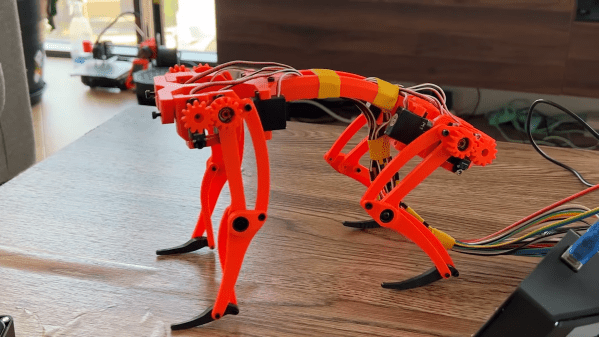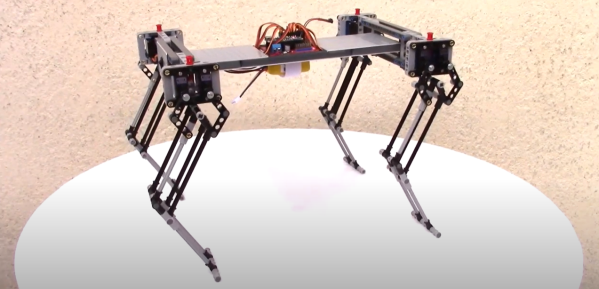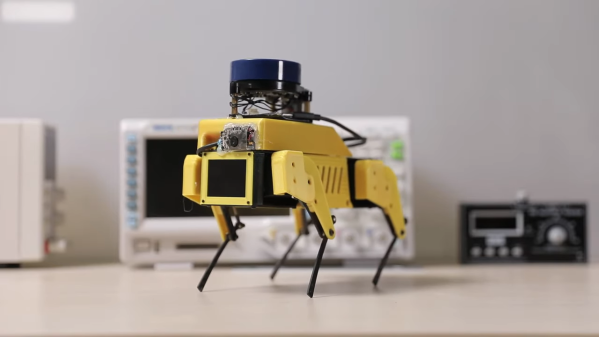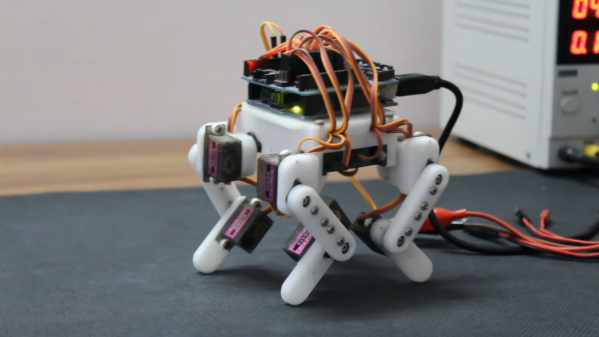Robot humanoids are cool, but also a bit hard to make work as they only have two legs to stand on. Four-legged robots can be a bit more approachable. The Dingo Quadruped aims to be just such an open-source platform for teaching and experimentation purposes.
The robot is based on the Stanford Pupper, a robot platform we’ve discussed previously. It bears a design not dissimilar from the popular Spot robot from Boston Dynamics. Where Spot costs tens of thousands of dollars, though, Dingo is far cheaper, intended for cheap production by students and researchers for less than $1,500.
The robot weighs around 3 kg, and is approximately the size of a shoebox. Control over the robot is via a wireless game controller. Each leg uses three high-torque servo motors, which are elegantly placed to reduce the inertia of the leg itself. A Raspberry Pi runs the show, with an Arduino Nano also onboard for interfacing analog sensors or additional hardware. The chassis itself has a highly modular design, with a focus on making it easy to add additional hardware.
If you want to get started experimenting with quadruped robots, the Dingo might just be the perfect platform for you. Video after the break.
Continue reading “DingoQuadruped Is A Cheap Canine-Like Robot”




















